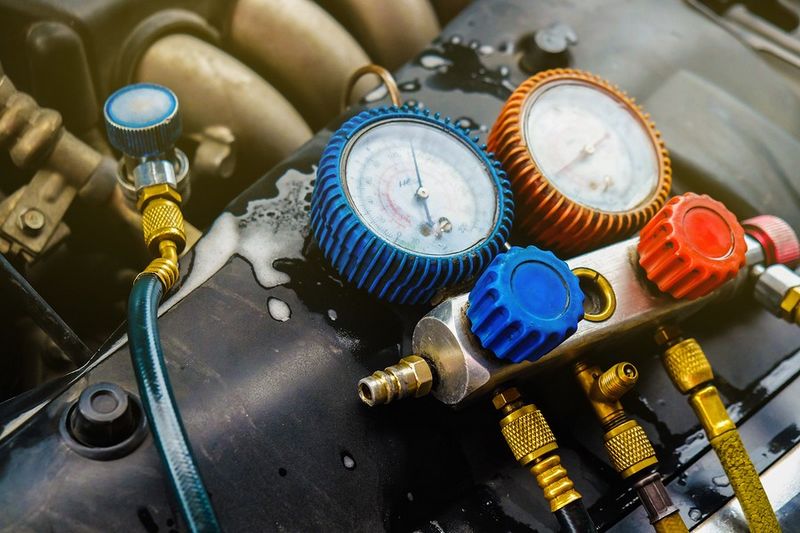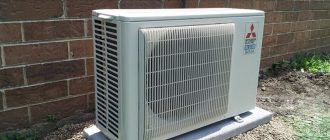
Why is AC recharge so expensive?
AC recharge is a service that’s essential for keeping your vehicle’s air conditioning system running efficiently. However, you may be wondering why the cost of AC recharge can sometimes be so high.
The answer lies in the complexity of the process. Recharging an AC system involves several steps, including checking for leaks, evacuating any remaining refrigerant, and recharging the system with new refrigerant. Each of these steps requires specialized equipment and expertise, which contributes to the overall cost.
Additionally, the cost of the refrigerant itself can be quite expensive. Refrigerants are chemicals that are crucial for the proper functioning of your AC system. These chemicals are subject to strict environmental regulations, which can drive up their cost. Moreover, the cost can vary depending on the type of refrigerant used in your particular AC system.
It’s important to remember that AC recharge is not a regular maintenance task like an oil change or tire rotation. It is a more complex process that requires specialized knowledge and equipment.
So, the next time you question why AC recharge seems expensive, keep in mind the complexity of the process and the cost of the refrigerant. By understanding the costs involved, you can better appreciate the importance of maintaining a properly functioning AC system in your vehicle.
Importance of AC Recharge
AC recharge is a crucial maintenance task that should not be overlooked. Many people wonder why AC recharge is so expensive, but the truth is, the cost is justified by the importance of this service.
Recharging your AC system regularly is necessary to ensure optimal performance. Over time, the refrigerant in your AC system can leak, leading to a decrease in cooling efficiency. Without an adequate amount of refrigerant, your AC unit will have to work harder to cool the air, resulting in increased energy consumption and higher electricity bills.
Furthermore, a low refrigerant level can cause your AC compressor to overheat and potentially fail. Replacing a faulty compressor can be extremely expensive, making regular AC recharge a cost-effective preventive measure.
In addition to improving cooling performance and preventing compressor failure, AC recharge also helps to extend the lifespan of your AC system. By ensuring that all components are functioning properly and maintaining the correct refrigerant level, you can minimize wear and tear, reducing the risk of breakdowns and expensive repairs in the future.
It is important to note that AC recharge should always be performed by a qualified technician. They have the knowledge and tools to safely evacuate and recharge your AC system, ensuring proper refrigerant levels and optimal performance.
So, while AC recharge may seem expensive, understanding the reasons behind the cost highlights its importance. By investing in regular AC recharge, you can enjoy a comfortable and efficient cooling system while saving money in the long run.
Factors Affecting AC Recharge Costs
The cost of an AC recharge can vary based on several factors. Understanding these factors can help you to better understand why AC recharge is so expensive. Here are some key factors that can affect the cost of an AC recharge:
1. Type of refrigerant: The type of refrigerant used in your AC system can impact the cost of a recharge. Some newer refrigerants, such as R-134a, are more expensive than older ones.
2. Amount of refrigerant needed: The amount of refrigerant needed to recharge your AC system can also affect the cost. Larger systems or systems with leaks may require more refrigerant, making the recharge more expensive.
3. Labor costs: The cost of labor involved in the recharge can vary depending on the complexity of the system and the location of the service provider. Skilled technicians may charge higher rates for their services.
4. Additional repairs: If your AC system requires additional repairs, such as fixing leaks or replacing parts, these costs will be added to the overall recharge cost. The extent of the repairs needed can influence the final price.
5. Warranty coverage: If your AC system is still under warranty, the cost of the recharge may be covered. However, if the warranty has expired or does not include AC recharge, you will need to pay for the service out of pocket.
6. Service provider: Different service providers may charge different rates for an AC recharge. It is always a good idea to research and compare prices from multiple providers to ensure you are getting the best deal.
By considering these factors, you can gain a better understanding of why AC recharge costs can be so expensive. It is important to keep in mind that proper maintenance and prompt repairs can help prevent the need for frequent recharges, saving you money in the long run.
Types of Refrigerants Used
When it comes to AC recharge, it is important to understand the different types of refrigerants that are commonly used. The type of refrigerant used in an AC system can have a significant impact on its performance, efficiency, and environmental impact.
The most common type of refrigerant used in AC systems is R-22, also known as Freon. R-22 has been widely used for many years due to its excellent heat-transfer properties. However, R-22 is now being phased out due to its harmful effects on the ozone layer. As a result, the production and import of R-22 are being reduced, leading to an increase in its cost.
Another common type of refrigerant used in AC systems is R-410A. R-410A is a more environmentally friendly alternative to R-22. It does not contribute to ozone depletion and has a lower global warming potential. R-410A is also more efficient and provides better cooling performance compared to R-22. However, the cost of R-410A is generally higher than R-22.
There are also other types of refrigerants used in specialized AC systems, such as R-134a for automotive air conditioning and R-1234yf for newer vehicle models. These refrigerants have their own unique properties and are designed to meet specific requirements.
- R-22 (Freon): commonly used, but being phased out
- R-410A: environmentally friendly alternative with better performance
- R-134a: used in automotive air conditioning
- R-1234yf: used in newer vehicle models
Understanding the types of refrigerants used in AC systems can help you make informed decisions when it comes to AC recharge. It is important to choose a refrigerant that is compatible with your AC system and meets any regulatory requirements.
Environmental Regulations and Pricing
Environmental regulations play a significant role in the cost of AC recharge services. These regulations aim to protect the environment and ensure the responsible use and disposal of refrigerants.
The refrigerants used in air conditioning systems, such as R-134a or R-1234yf, contain substances known as hydrofluorocarbons (HFCs). HFCs are potent greenhouse gases that contribute to global warming when released into the atmosphere.
To mitigate the environmental impact, many countries have implemented strict regulations on the use and handling of HFCs. AC recharge service providers need to comply with these regulations, which often involve additional training, certifications, and equipment. These compliance costs contribute to the overall expense of AC recharge services.
Furthermore, environmental regulations also require proper refrigerant recovery and recycling. When an air conditioning system is recharged, the old refrigerant needs to be safely collected and disposed of to prevent environmental contamination. The process of recovering and disposing of refrigerants adds to the cost of AC recharge services.
Another factor is the price of the new refrigerant. As environmental regulations limit the production and import of certain HFCs, the supply of these refrigerants becomes more limited and expensive. Additionally, newer refrigerants that are more environmentally friendly, such as R-1234yf, often command a higher price than older ones.
So, it is important to understand that the high cost of AC recharge services is largely due to environmental regulations and the associated compliance and disposal requirements.
Labor Costs for AC Recharge
So, why is AC recharge so expensive? One of the main factors contributing to the cost is the labor involved in the process.
When you take your AC system to a professional for a recharge, you are paying for their time and expertise. AC recharging requires specialized knowledge and skill, as well as the use of specific tools and equipment.
The technician will need to diagnose the issue with your AC system, locate the refrigerant leak (if any), and then proceed with the recharge. This process can be time-consuming and requires attention to detail to ensure that the recharge is done correctly.
In addition to the time spent on the recharge itself, there may also be other labor costs included. For example, if the technician needs to remove components or parts to access the AC system, additional labor charges may apply.
Furthermore, the cost of labor can vary depending on the location and the experience level of the technician. In areas with a higher cost of living, labor costs for AC recharge tend to be higher. Likewise, a highly skilled and experienced technician may charge more for their services compared to someone with fewer qualifications.
Overall, the labor costs for AC recharge are an important part of the overall cost. While it may seem expensive, it is necessary to ensure that your AC system is properly recharged and functioning at its best.
Equipment and Tools
When it comes to AC recharge, there are a variety of equipment and tools involved in the process. These tools are essential for ensuring a proper and effective recharge of your air conditioning system.
- Refrigerant: The most important tool for AC recharge is the refrigerant itself. This is the substance that cools the air in your AC system. It is essential to use the correct type and amount of refrigerant for optimal performance.
- Recharge Kit: A recharge kit typically includes a canister of refrigerant, a pressure gauge, and a hose. This kit allows you to recharge your AC system on your own, saving you the cost of hiring a professional.
- Manifold Gauges: These gauges are used to measure the pressure and temperature of the refrigerant. They provide valuable information for determining the health and efficiency of your AC system.
- Vacuum Pump: A vacuum pump is used to remove any air and moisture from the AC system before recharging it. This is important for preventing damage and ensuring the longevity of your AC system.
- Leak Detection Kit: Sometimes, an AC recharge is necessary due to a refrigerant leak. A leak detection kit helps identify and locate any leaks in the system, allowing you to fix them before recharging.
These are just a few examples of the equipment and tools involved in an AC recharge. Each tool plays a vital role in ensuring a successful and efficient recharge, which is why the process can be expensive. However, it is essential to invest in the proper equipment and tools to maintain the performance and longevity of your AC system.
Additional Services and Repairs
In addition to the AC recharge, there are several other services and repairs that may be necessary for your air conditioning system. While these additional services can contribute to the overall cost, they are important for ensuring the optimal performance and longevity of your AC system.
One common additional service that may be needed is a leak detection. If your AC system is low on refrigerant, it may have a leak that needs to be identified and repaired. This process involves using specialized equipment to detect the location of the leak and then sealing it to prevent further refrigerant loss.
Another common repair is the replacement of worn-out or faulty components. Over time, certain parts of the AC system may wear out or become damaged, affecting its overall performance. This can result in poor cooling, increased energy consumption, and potential system failure. Replacing these components can help restore the system’s efficiency and functionality.
Additionally, regular maintenance and cleaning services are recommended to keep your AC system in top condition. This includes cleaning the condenser coils, replacing air filters, and inspecting the system for any potential issues. These services help prevent problems and maintain the efficiency of the system, ultimately saving you money on future repairs.
| Leak detection and repair | Varies depending on the extent of the leak |
| Component replacement | Varies depending on the specific parts needed |
| Maintenance and cleaning | Typically included in a maintenance package or priced separately |
While these additional services and repairs can contribute to the overall cost of AC recharge, they are essential for maintaining the performance and efficiency of your air conditioning system. It is important to consider these factors when evaluating the expenses associated with AC maintenance.
Brand and Quality of Refrigerants
Another significant factor that contributes to the high cost of AC recharge is the brand and quality of refrigerants used. It is essential to choose reputable brands and high-quality refrigerants to ensure the optimal performance and longevity of your air conditioning system.
Refrigerants play a crucial role in the cooling process of your AC unit. They absorb heat from the indoor air and expel it outside, creating a comfortable and cool environment. However, not all refrigerants are created equal.
Lower-quality refrigerants may have a shorter lifespan and lower cooling efficiency, resulting in more frequent recharges and higher costs in the long run. These subpar refrigerants may also contain impurities that can potentially harm the internal components of the air conditioning system.
On the other hand, reputable brands and high-quality refrigerants are designed to provide superior cooling performance and durability. While they may be slightly more expensive upfront, they can save you money in the long term by reducing the frequency of AC recharges and minimizing the risk of costly repairs or replacements.
Choosing the right brand and quality of refrigerants is crucial for maintaining a reliable and efficient AC system. Consult with a professional technician to ensure you are using the most suitable refrigerant for your specific air conditioning unit.
Warranty and Guarantee Policies
Why is AC Recharge So Expensive?
The cost of AC recharge can be perceived as expensive due to several factors. One of these factors includes the warranty and guarantee policies offered by the service provider.
Understanding the Costs
When you opt for an AC recharge service, you want to ensure that your investment is protected. Many service providers offer warranty and guarantee policies to address any issues that may arise after the recharge. These policies provide coverage for a certain period of time, typically ranging from a few months to a year, depending on the provider.
Why Warranty and Guarantee Policies Matter
Having warranty and guarantee policies in place gives you peace of mind knowing that you are protected against any unforeseen circumstances. If your AC system experiences any malfunctions or fails to deliver the expected results within the warranty period, the service provider will repair or replace the components free of charge. This can save you from incurring additional expenses.
Factors That Affect Warranty and Guarantee Policies
It’s important to note that the terms and conditions of warranty and guarantee policies may vary among different service providers. Factors that can affect these policies include the type of AC unit, its age, and the level of maintenance you have performed on it. It is always recommended to read and understand the terms and conditions of the warranty and guarantee policies before opting for an AC recharge service.
In conclusion, understanding the warranty and guarantee policies offered by service providers can help you better comprehend why AC recharge may seem expensive. These policies provide you with assurance that you are protected in case of any issues, giving you peace of mind and potentially saving you from additional expenses in the long run.
Market Demand and Competition
Understanding why AC recharge is so expensive requires examining factors such as market demand and competition. AC recharge services are in high demand due to the significant number of vehicles on the road that require regular AC maintenance. As temperatures rise, more people seek to stay cool and comfortable while driving, increasing the need for AC recharge services.
Competition also plays a role in driving up the cost of AC recharge. With many service providers offering AC recharge, there is fierce competition to attract customers. This competition can result in higher prices as providers strive to differentiate themselves by offering additional services or premium quality recharge options.
Additionally, AC recharge requires specialized knowledge and equipment, which further contributes to its cost. Professionals who provide AC recharge services often undergo extensive training to ensure they are knowledgeable about various AC systems and can diagnose and repair any issues accurately. The equipment used to recharge AC systems also requires regular maintenance and calibration to ensure accurate and efficient service.
In conclusion, market demand, competition, and the specialized knowledge and equipment required all contribute to the expense of AC recharge services. While the cost may seem high, it is essential to ensure a properly functioning AC system for optimal comfort and safety while driving.
Seasonal Variation in Pricing
Recharging your AC can be an expensive service. However, the cost of AC recharge can vary depending on the season.
During the hot summer months when the demand for AC recharge is high, the prices tend to be more expensive. This is because there is a greater demand for the service, and service providers may need to allocate additional resources to meet the increased demand.
On the other hand, during the cooler months when the demand for AC recharge is lower, prices may be lower as well. Service providers may offer discounts or promotions to attract customers during this period.
It’s important to keep in mind that seasonal variation in pricing is not exclusive to AC recharge. Many other products and services also experience similar fluctuations in prices throughout the year.
Whether it’s the scorching heat of summer or the chilly winter winds, understanding the seasonal variation in AC recharge pricing can help you make informed decisions and potentially save money on this essential service.
Expertise and Experience of Service Technicians
When it comes to understanding why AC recharge can be so expensive, one of the key factors to consider is the expertise and experience of the service technicians involved in the process. AC recharge is not a simple task and requires the knowledge and skills of trained professionals.
Service technicians who specialize in AC recharge have undergone extensive training and have acquired the necessary expertise to diagnose and repair issues with air conditioning systems. They are knowledgeable about the complex components and systems involved in AC recharge, including refrigerants, compressor units, and pressure gauges.
Additionally, experienced technicians have years of practical experience under their belts. They have encountered a wide range of AC recharge problems and are familiar with the best practices and techniques to ensure a successful and efficient recharge. Their expertise and experience enable them to quickly and accurately identify any underlying issues and provide effective solutions.
Furthermore, service technicians invest in specialized tools and equipment to perform AC recharge properly. These tools are designed to measure refrigerant levels, detect leaks, and ensure the overall functionality of the air conditioning system. The cost of acquiring and maintaining these tools is reflected in the overall price of AC recharge services.
| Expertise and experience of service technicians |
| Cost of specialized tools and equipment |
| Regulations and safety standards |
| Quality of refrigerants and materials |
In conclusion, the expertise and experience of service technicians play a significant role in why AC recharge can be expensive. Their knowledge, skills, and specialized tools ensure the proper diagnosis and repair of air conditioning systems, ultimately providing customers with efficient and long-lasting solutions to their cooling needs.
Geographic Location and Local Market Factors
In addition to the necessary costs associated with an AC recharge, the overall expense can be influenced by geographic location and local market factors. These factors can vary widely from one area to another.
In some regions, the demand for AC recharge services may be higher, which can drive up the cost due to increased competition among service providers. Additionally, high demand can lead to increased labor costs and a limited availability of technicians, further contributing to the expense.
Moreover, the cost of refrigerant gases can vary depending on the local market. Different regions may have different regulations and requirements concerning the types and quantities of refrigerants that can be used, which can impact the overall cost of the AC recharge.
Furthermore, certain locations may have higher overhead costs such as rent and utilities, which can also influence the price of an AC recharge.
Therefore, when considering why AC recharge can be expensive, it is important to take into account geographic location and local market factors that can significantly contribute to the overall cost.
Comparison of AC Recharge Pricing
When it comes to AC recharge, many people wonder why it is so expensive. Understanding the costs can help shed light on this issue.
There are several factors that contribute to the higher cost of AC recharge. One reason is the complexity of the process. AC recharge involves evacuating the old refrigerant, adding new refrigerant, and checking for leaks. This requires specialized equipment and expertise, which adds to the overall cost.
Another reason for the high cost is the price of the refrigerant itself. AC systems require specific types of refrigerants that can be expensive to purchase. Additionally, the cost of refrigerants has increased in recent years due to environmental regulations and the phasing out of older, less eco-friendly refrigerants.
The labor involved in AC recharge also factors into the cost. AC technicians spend time diagnosing the problem, performing the recharge, and testing the system to ensure it is functioning properly. This expertise and time commitment contribute to the higher pricing.
Lastly, the cost of AC recharge can vary depending on the location and the service provider. Different shops may have different overhead costs, and this can be reflected in the pricing. It is always a good idea to shop around and compare prices before committing to a service.
By understanding the reasons behind the expense of AC recharge, customers can better appreciate the value of the service. While it may seem costly upfront, investing in a proper AC recharge can help ensure the longevity and efficiency of your AC system in the long run.
Q&A:
Why is AC recharge necessary?
AC recharge is necessary because the refrigerant in the system can leak over time, resulting in decreased cooling performance. Recharging the AC system replaces the lost refrigerant and restores the system’s ability to cool effectively.
How often should I recharge my AC?
The frequency of AC recharges depends on various factors such as the age and condition of your AC system, as well as how frequently you use it. As a general guideline, it is recommended to recharge your AC every 1-2 years to ensure optimal performance.
Why is AC recharge so expensive?
AC recharge can be expensive due to several factors. Firstly, the cost of the refrigerant itself can be high. Additionally, specialized equipment and tools are required to perform the recharge properly, which can increase the overall cost. Lastly, labor costs and service charges also contribute to the expense.
Can I recharge my AC system on my own?
While it is possible to recharge your AC system on your own using DIY recharge kits, it is generally not recommended. AC systems are complex and require specific knowledge and equipment to be recharged properly. Improper recharge attempts can lead to further damage or even complete system failure.
Are there any alternative options to AC recharge?
In some cases, AC recharge may not be the most cost-effective solution. If your AC system is older or has significant damage or leaks, it may be more practical to consider replacing the entire system instead of just recharging it. This can provide improved cooling performance and potentially lower long-term costs.
Why is AC recharge so expensive?
AC recharge is expensive because it requires a professional technician to properly diagnose the problem, locate any leaks, and refill the refrigerant. Additionally, the cost of the refrigerant itself can be expensive, and there may be additional fees for labor and any necessary repairs.
How much does AC recharge cost?
The cost of an AC recharge can vary depending on factors such as the type of vehicle, region, and the specific repair shop. On average, you can expect to pay anywhere from $100 to $300 for an AC recharge. However, it’s important to note that this is just an estimate, and the actual cost may be higher or lower.




